Like a peaceful sanctuary crafted by nature’s hand, your bedroom can become a sleep-inducing haven with the right selection of indoor plants. You’ll discover how specific varieties not only purify your air but also promote deeper, more restful sleep through their natural properties. From the snake plant’s night-time oxygen production to lavender’s proven calming effects, each carefully chosen green companion serves a distinct purpose in your sleep environment. The following collection of plant arrangements will transform your bedroom into the tranquil retreat you’ve been seeking.
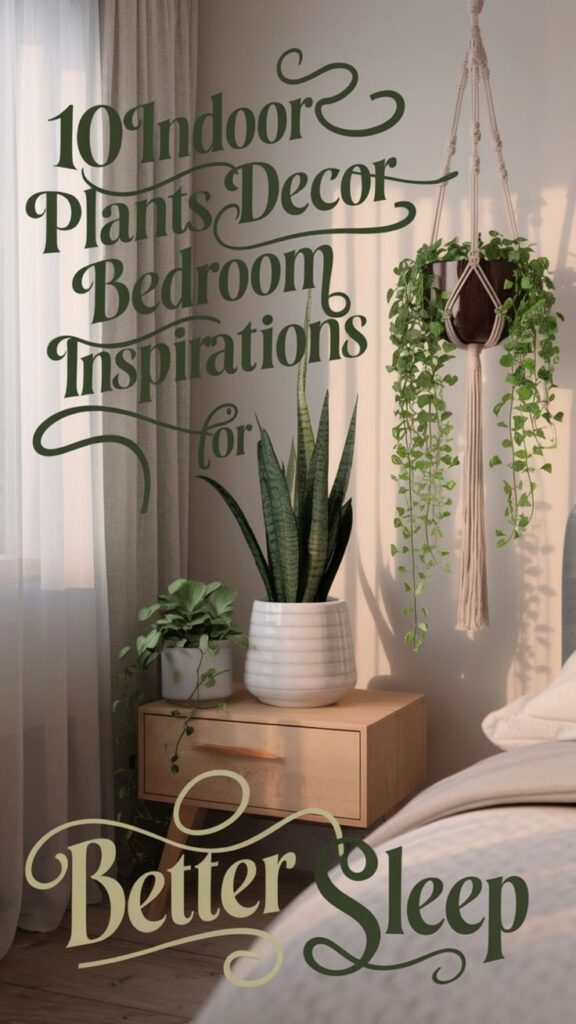
Contents
- 1 Essential Bedroom Plants for Air Purification
- 2 Calming Lavender and Jasmine Corner Arrangements
- 3 Low-Maintenance Succulent Displays for Nightstands
- 4 Creating a Tropical Sleep Oasis With Large-Leaf Plants
- 5 Hanging Plants to Maximize Bedroom Space
- 6 The Perfect Plant Trio for Small Bedrooms
- 7 Minimalist Plant Styling for Modern Bedrooms
- 8 Natural Dividers Using Tall Indoor Plants
- 9 Window Sill Garden Ideas for Better Sleep
- 10 Aromatherapeutic Plant Combinations for Restful Nights
Essential Bedroom Plants for Air Purification

Essential bedroom plants known for air purification include:
Snake Plant (Sansevieria)
- Tall, upright leaves with snake-like patterns
- Converts CO2 to oxygen at night
- Removes formaldehyde and benzene
- Tolerates low light conditions
Spider Plant (Chlorophytum comosum)
- Arching green and white striped leaves
- Produces hanging plantlets
- Removes xylene and carbon monoxide
- Easy to maintain and propagate
Peace Lily (Spathiphyllum)
- Dark green leaves with white flower spaths
- Removes ammonia and trichloroethylene
- Helps reduce airborne mold spores
- Thrives in moderate to low light
Bamboo Palm (Chamaedorea seifrizii)
- Feathery fronds on multiple stems
- Natural humidifier
- Filters benzene and trichloroethylene
- Grows well in indirect light
These plants require minimal maintenance and actively clean indoor air during nighttime hours, making them ideal for bedroom environments.
Calming Lavender and Jasmine Corner Arrangements
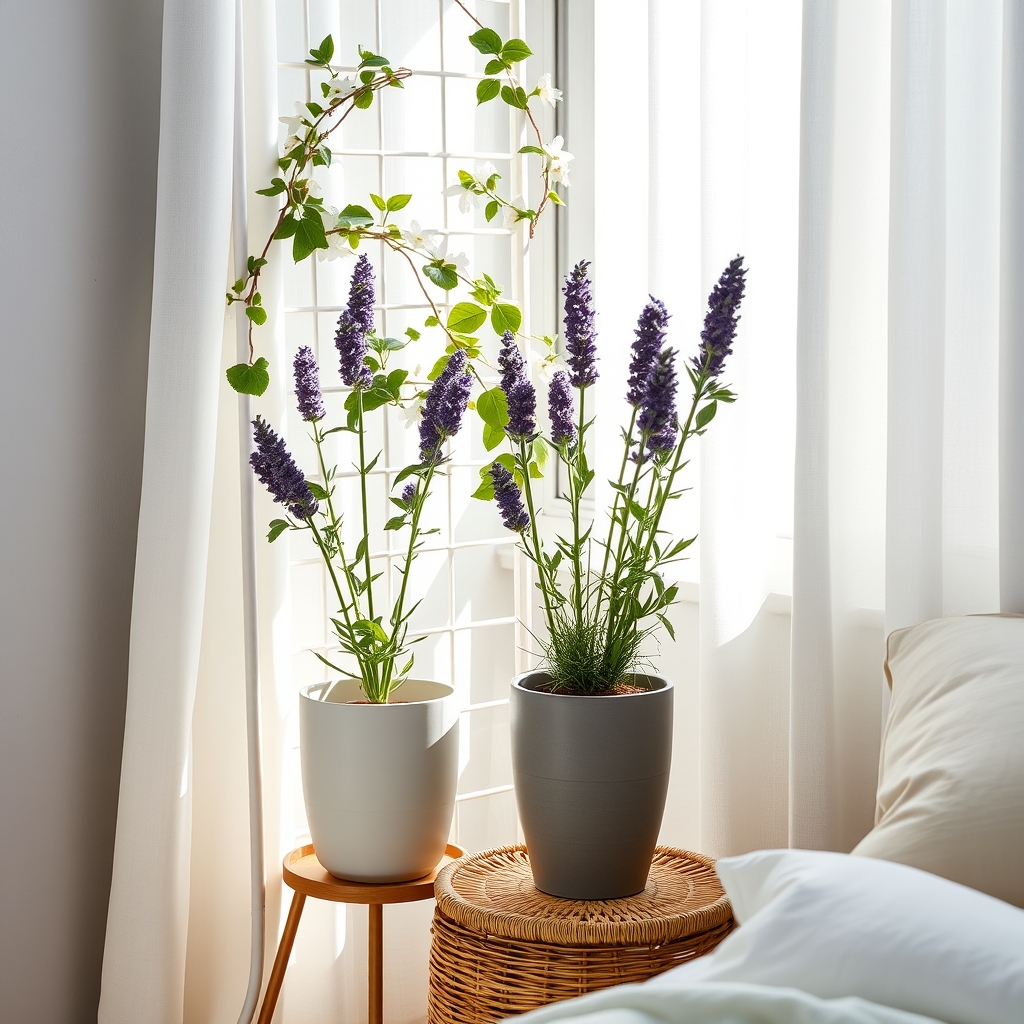
A carefully arranged grouping of lavender and jasmine plants creates a serene focal point in bedroom corners, combining soft purple and white blooms.
Lavender’s silvery-green spikes grow upright while jasmine’s delicate vines can cascade from elevated planters or climb decorative trellises. These plants release natural aromatherapeutic compounds, with lavender offering its signature calming scent and jasmine contributing sweet, floral notes that promote relaxation.
The arrangement typically works best with 2-3 lavender plants surrounded by climbing jasmine in coordinating ceramic pots or woven baskets, positioned to catch indirect light from nearby windows.
Low-Maintenance Succulent Displays for Nightstands
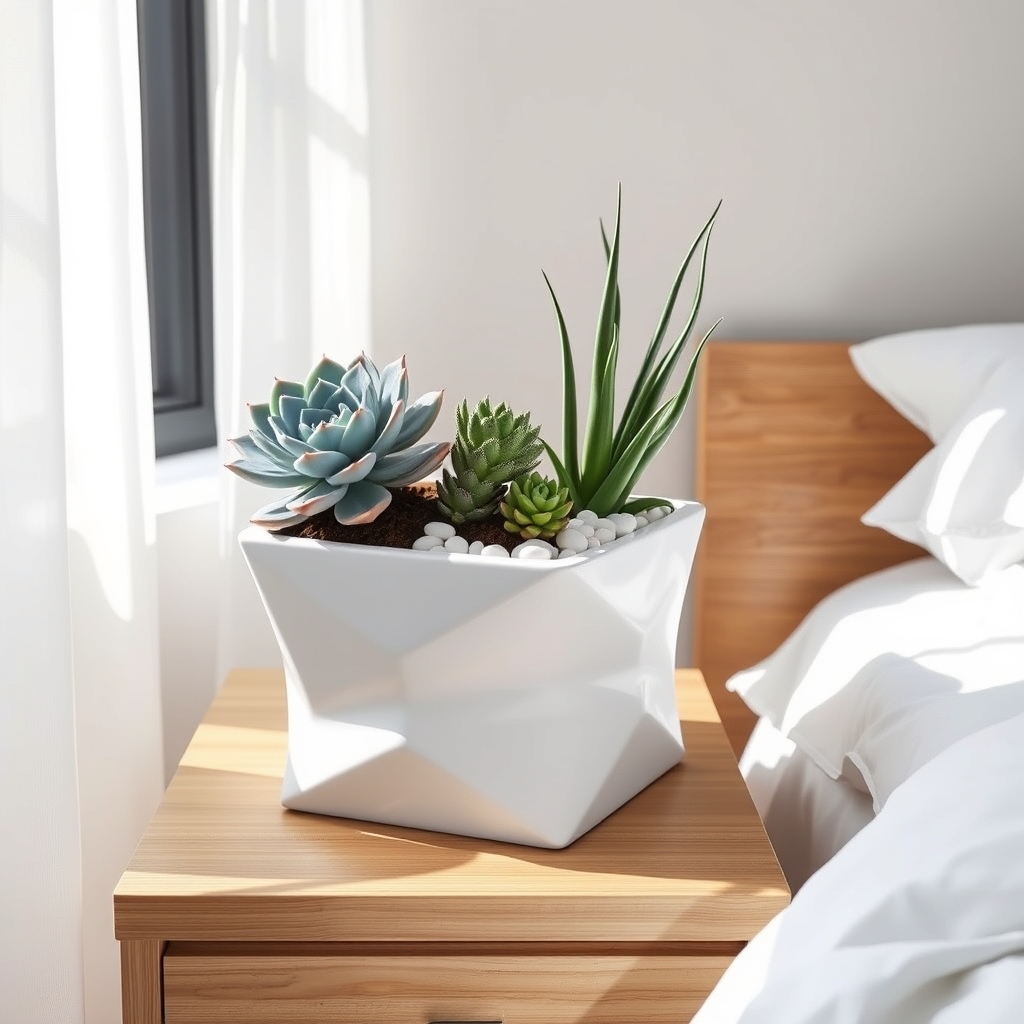
Low-maintenance succulent displays for nightstands typically feature compact arrangements of desert plants in small, decorative containers.
These displays commonly include rosette-shaped succulents like Echeveria, snake plants, or jade plants, arranged in shallow dishes or modern geometric pots with proper drainage.
Their unique features include water-storing leaves that require minimal care, compact growth patterns ideal for bedside spaces, and the ability to thrive in indoor environments with limited light.
Most succulent nightstand arrangements stand 4-8 inches tall, making them perfect for small spaces while adding natural elements to bedroom decor.
Creating a Tropical Sleep Oasis With Large-Leaf Plants

Large-leaf tropical plants transform a bedroom into a serene sleep sanctuary, mimicking the calming atmosphere of a rainforest retreat.
These statement plants feature broad, dramatic foliage that adds visual impact while helping to regulate humidity and air quality.
Plants like Bird of Paradise, Monstera deliciosa, and Elephant Ear create a lush canopy effect with their oversized leaves, casting gentle shadows and adding layers of deep greens.
The natural architecture of these plants draws the eye upward, making rooms feel taller and more spacious.
When grouped together, these specimens create a cocooning effect that promotes relaxation and shields from external distractions, contributing to better sleep quality.
Hanging Plants to Maximize Bedroom Space
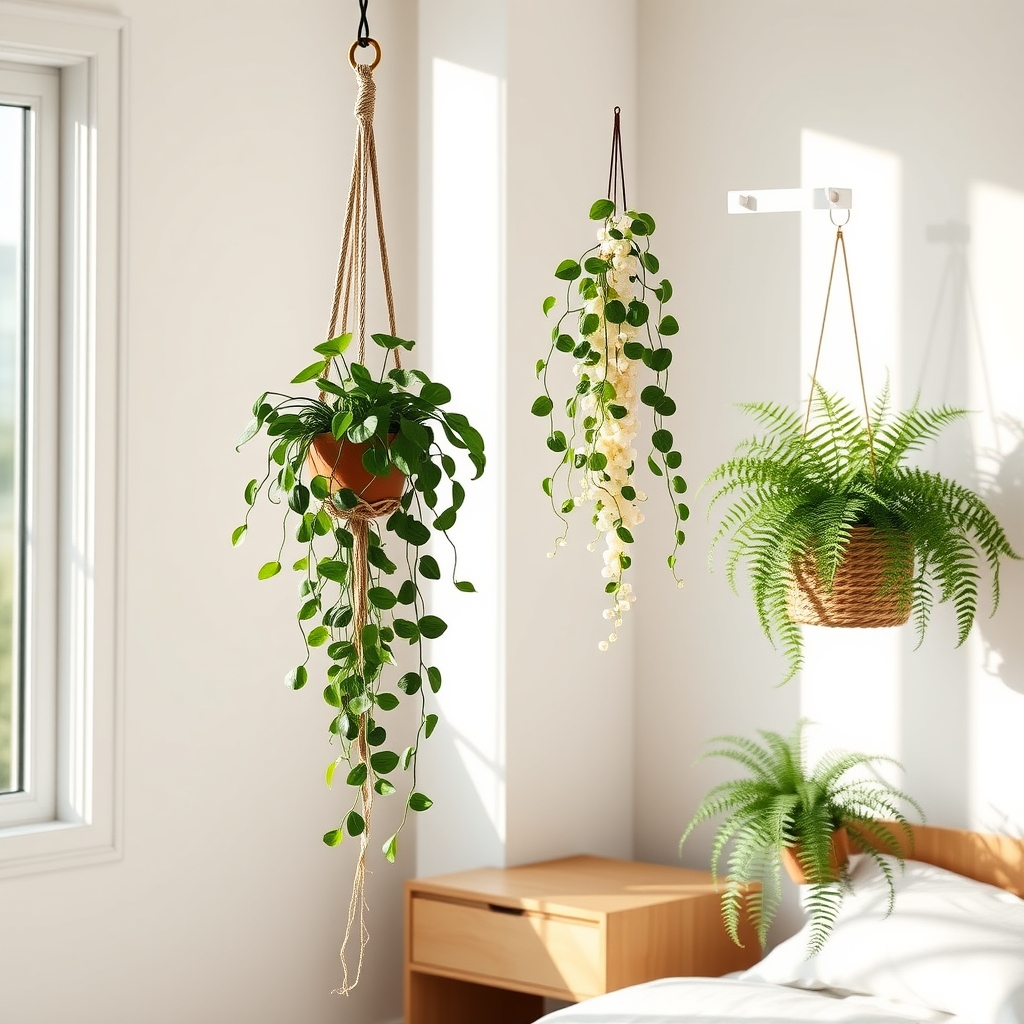
Hanging plants offer a space-efficient solution for bedrooms by utilizing vertical space rather than valuable floor or surface areas.
These suspended greenery options typically dangle from ceiling hooks, wall brackets, or windowsills using macramé holders, decorative chains, or simple plant hangers.
Popular hanging plants suitable for bedrooms include:
- Spider plants with their cascading variegated leaves
- Pothos with heart-shaped foliage that trails downward
- String of pearls featuring delicate bead-like leaves
- Boston ferns with their full, feathery fronds
These plants create visual interest at different heights while keeping pathways clear and nightstands free.
Most hanging varieties require minimal maintenance and can be positioned near windows without taking up precious bedroom real estate.
The suspended placement also helps improve air circulation around the plants, promoting healthier growth and better air-purifying capabilities.
The Perfect Plant Trio for Small Bedrooms
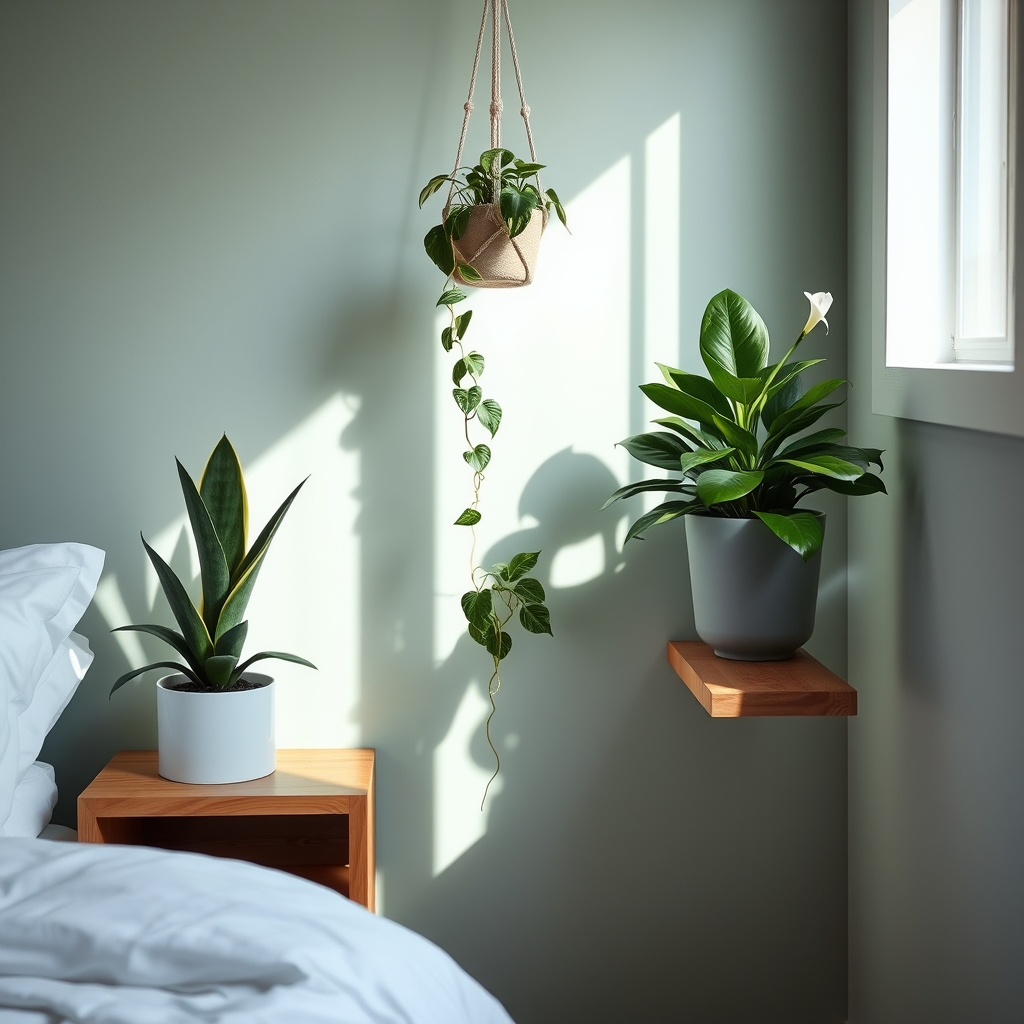
The Perfect Plant Trio for Small Bedrooms consists of space-efficient plants that work together to promote better sleep while fitting comfortably in limited spaces.
This combination includes the compact Snake Plant (reaching 6-8 inches in height), the trailing Pothos (in a hanging basket), and the tabletop-sized Peace Lily (12-16 inches tall).
Each plant serves a distinct purpose: the Snake Plant releases oxygen at night, the Pothos filters indoor air pollutants, and the Peace Lily increases humidity levels.
These plants can be arranged vertically using wall-mounted planters, windowsills, and bedside tables to maximize floor space while creating a sleep-friendly environment.
Minimalist Plant Styling for Modern Bedrooms
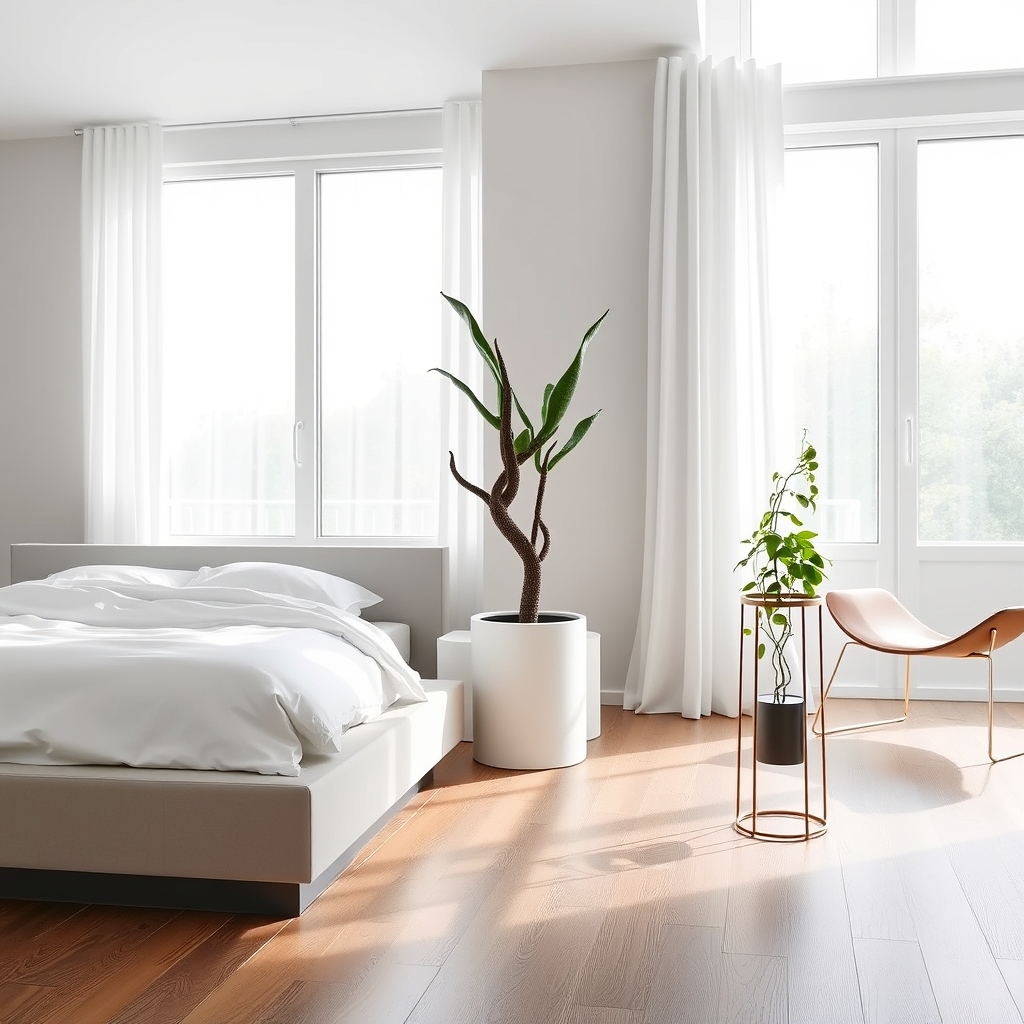
Minimalist plant styling for modern bedrooms focuses on clean lines, uncluttered arrangements, and strategic placement of select specimens.
This approach typically features one to three statement plants in simple, geometric containers with neutral colors like white, black, or concrete. Plants are often positioned in bare corners, on floating shelves, or beside the bed on streamlined nightstands.
Common elements include clear glass vases, metallic stands, and monochromatic pots without ornate designs. The style emphasizes negative space and creates visual impact through careful plant selection, such as a single tall snake plant or a sculptural ZZ plant, rather than multiple smaller specimens.
This aesthetic complements contemporary furniture and maintains the calm, uncluttered atmosphere essential for a restful bedroom environment.
Natural Dividers Using Tall Indoor Plants
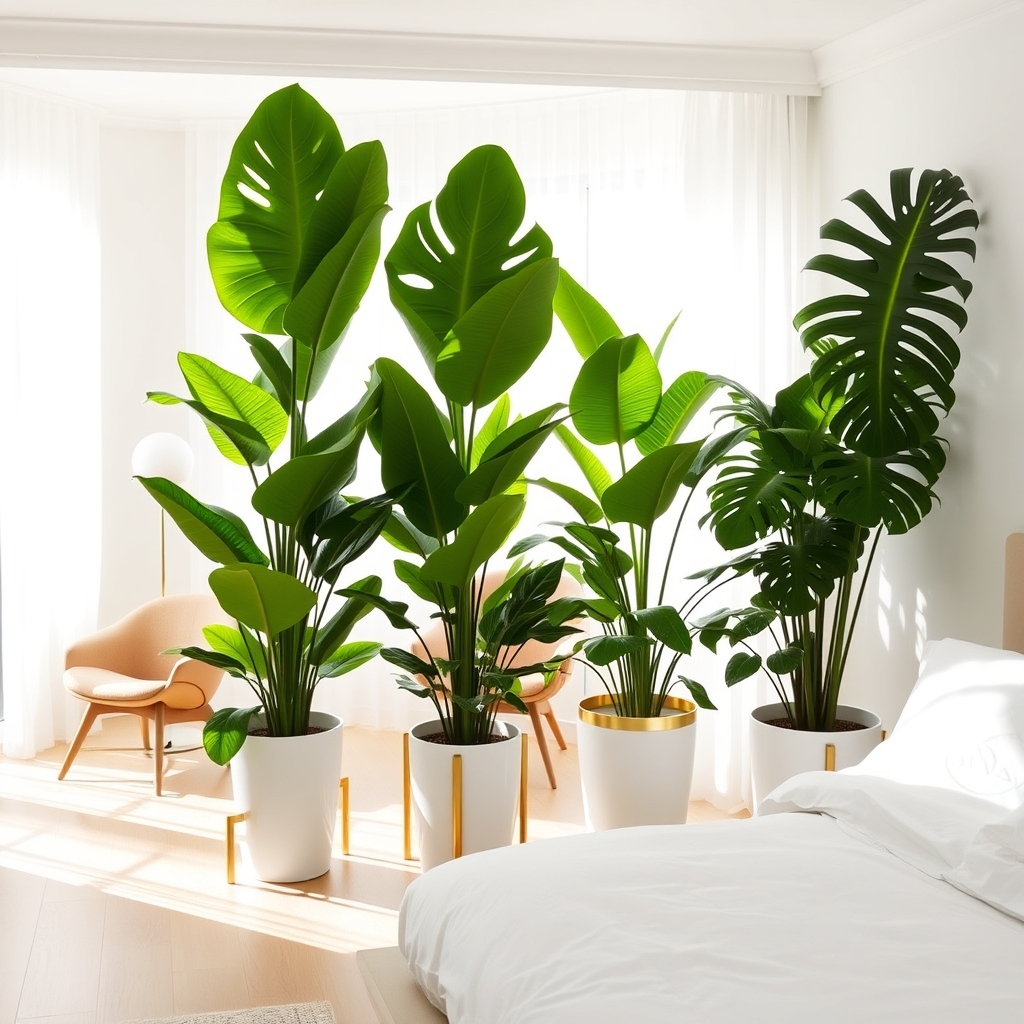
Tall indoor plants serve as elegant living room dividers that create natural boundaries while maintaining an open, airy feel.
These green barriers typically reach heights of 4-8 feet and can include species like bamboo palm, fiddle leaf fig, and monstera deliciosa. The plants are often arranged in clusters or linear formations, creating semi-transparent screens that separate spaces without blocking light or air flow.
Their varying leaf sizes, heights, and textures add visual interest while fulfilling the practical purpose of space division.
When placed in decorative planters or stands, these natural dividers become architectural elements that enhance both room functionality and aesthetic appeal.
Window Sill Garden Ideas for Better Sleep
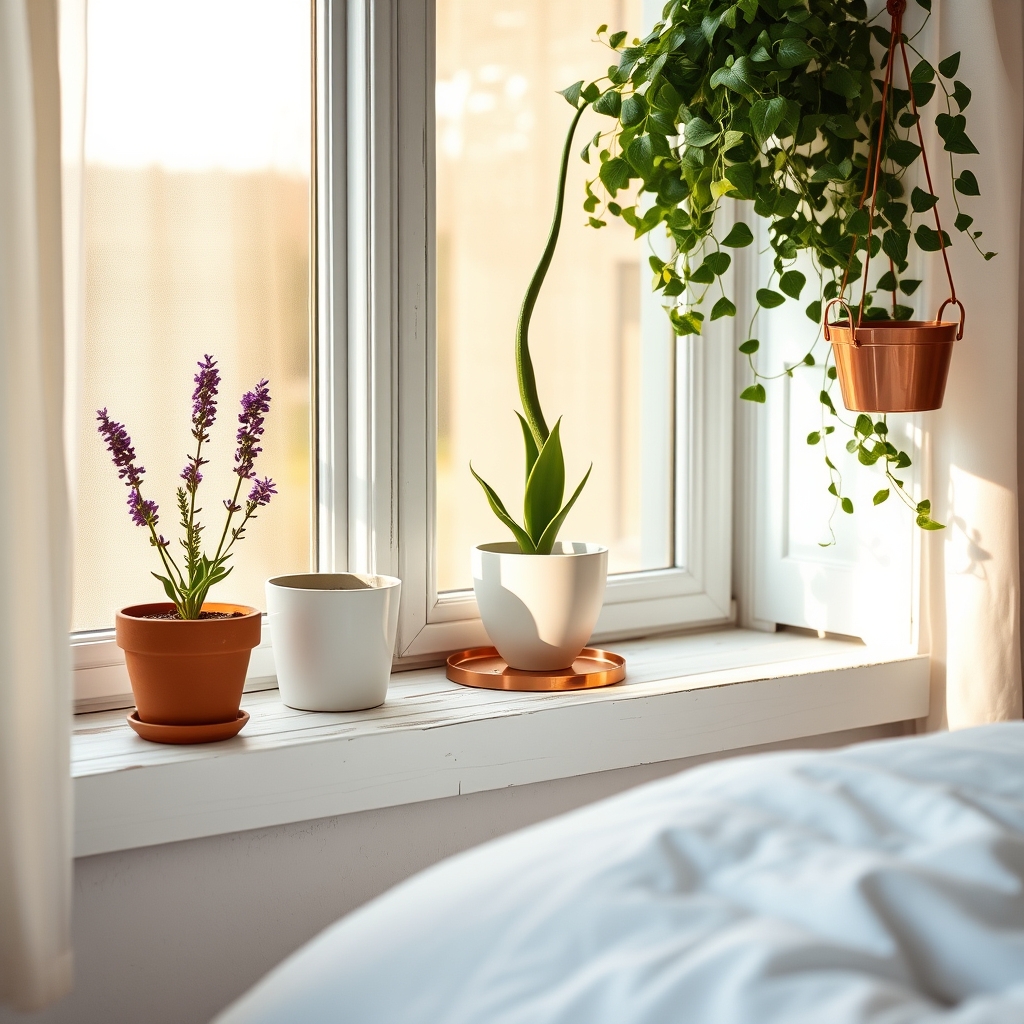
A window sill garden designed for better sleep consists of a curated arrangement of sleep-promoting plants placed along interior window ledges.
These compact gardens typically feature 2-3 small potted plants in varying heights, utilizing natural light while maximizing limited space.
Common configurations include:
- Lavender in terra cotta pots
- Snake plants in sleek vertical containers
- English Ivy trailing down from elevated planters
- Small pots of Jasmine positioned near bed-facing windows
- Aloe vera in shallow, wide containers
The setup requires:
- Proper drainage trays to protect window sills
- Adequate spacing between pots (2-3 inches)
- Strategic placement to catch morning or evening light
- Easy access for watering and maintenance
Unique features:
- Space-efficient design
- Natural air purification
- Aromatherapeutic benefits
- Double function as room decor
- Easy maintenance in accessible location
Aromatherapeutic Plant Combinations for Restful Nights
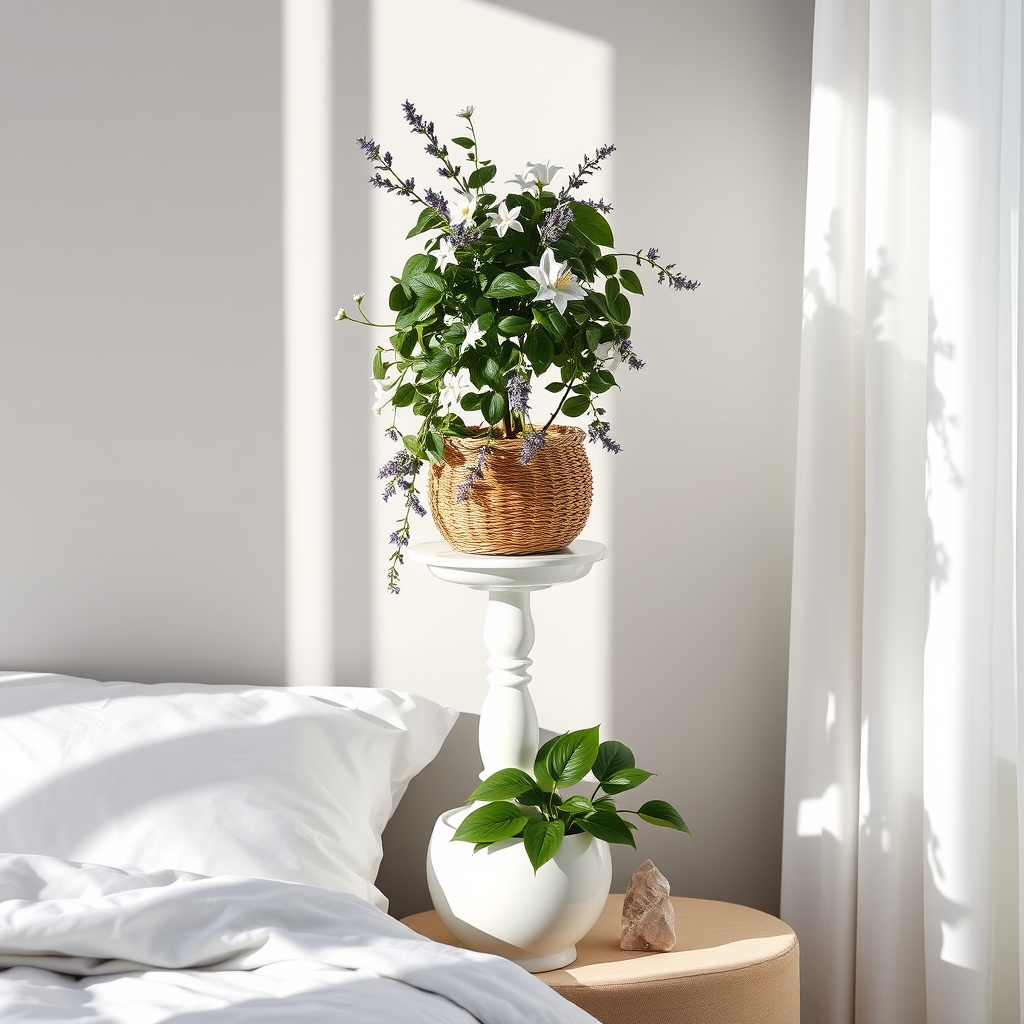
Aromatherapeutic Plant Combinations for Restful Nights describes carefully selected groupings of fragrant indoor plants that work together to promote better sleep quality.
These plant combinations typically include 2-3 complementary species arranged in close proximity, creating a natural diffusion of sleep-inducing aromas throughout a bedroom space.
Common pairings include lavender with jasmine, gardenia with snake plant, or eucalyptus with Peace Lily.
These arrangements often feature plants of varying heights and textures, creating visual interest while maximizing their aromatherapeutic benefits. The plants are typically positioned on nightstands, windowsills, or shelves near the bed to optimize their calming effects.
Unique features of these combinations include:
- Natural air purification capabilities
- Release of gentle, sleep-promoting essential oils
- Harmonious blend of different scent profiles
- Multi-level display potential
- Low-maintenance care requirements suitable for bedroom environments
